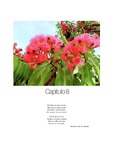Mostrar el registro sencillo del ítem
Agricultural activities, management and conservation of natural resources of Central and South American savannas
| dc.rights.license | http://creativecommons.org/licenses/by-nc-sa/3.0/ve/ | |
| dc.contributor.author | Fariñas G, Mario R. | |
| dc.date.accessioned | 2014-11-21T15:13:26Z | |
| dc.date.available | 2014-11-21T15:13:26Z | |
| dc.date.issued | 2008 | |
| dc.identifier.uri | http://www.saber.ula.ve/handle/123456789/39368 | |
| dc.description.abstract | Neotropical savannas are diversified systems, especially those of the Brazilian Cerrado, with a vascular flora exceeding 7,000 species, 45 % of these being endemic, which makes it the richest tropical savanna in the world. This biodiversity is threatened by the expansion of the agricultural frontiers, and the invasive African grasses. The savanna’s soils are fragile, have low fertility, and high Al toxicity; nevertheless, in the savannas only the subsistence agriculture and the extensive cattle rising on low quality native grasses were practiced; but there was a quick monocropping expansion, of grains and grasses, with improved agricultural methods, government subsidies, and strong investments in fertilizers and machinery, especially in Brazil and Venezuela. Savannas became the world’s most productive agricultural frontiers. These systems showed productivity loss and soil degradation, due to inadequate farming techniques, giving way to soybean-corn rotation systems with minimum tillage but a high use of herbicides. Savanna-adapted species were selected: cereals, grains, forage, and crop/livestock-integrated systems with conservationist farming were implanted. The result was a soil improvement, higher meat and milk agricultural production, and a stabilization of the agricultural expansion. There is an agreement to deepen and popularize the results of the research. Governments and NGOs are taking actions to expand the protected areas, but the world food scarcity and the run towards biofuels could generate a new agricultural expansion. | es_VE |
| dc.language.iso | en | es_VE |
| dc.publisher | Falero, F., Lopes de Farias, N. (Eds). Savannas: desafios estratégias o equilibrio entre sociedade, agronegocio e recursos naturais. Capítulo 8. Embrapa. Brasil, pp. 262-281 | es_VE |
| dc.rights | info:eu-repo/semantics/openAccess | |
| dc.title | Agricultural activities, management and conservation of natural resources of Central and South American savannas | es_VE |
| dc.type | info:eu-repo/semantics/article | |
| dc.description.colacion | 262-281 | es_VE |
| dc.description.email | mfarinas@ula.ve | es_VE |
| dc.publisher.pais | Brasil | es_VE |
| dc.subject.facultad | Facultad de Ciencias | es_VE |
| dc.subject.institucion | Universidad de Los Andes | es_VE |
| dc.subject.thematiccategory | Biología | es_VE |
| dc.subject.tipo | Artículos | es_VE |
| dc.subject.unidadinv | Instituto de Ciencias Ambientales y Ecológicas (ICAE) | es_VE |
| dc.type.media | Texto | es_VE |
Ficheros en el ítem
Este ítem aparece en la(s) siguiente(s) colección(ones)
-
Articulos, Pre-prints (Facultad de Ciencias)
-
Articulos, Pre-prints (Instituto de Ciencias Ambientales y Ecológicas (ICAE))
Articulos, Pre-prints del Instituto de Ciencias Ambientales y Ecológicas (ICAE)


